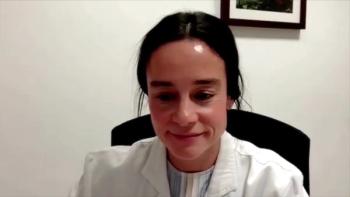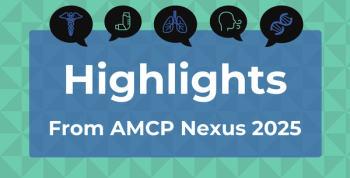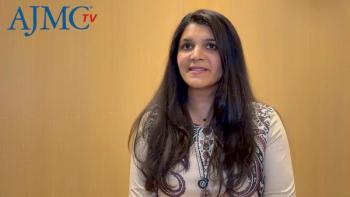
Maintenance Therapy and Relapse/Refractory Treatment
An expert provides an understanding of de-escalation or maintenance therapy and shares treatment plans for relapsed/refractory multiple myeloma.
Transcript:
Ajai Chari, MD: In terms of maintenance and de-escalation, if we look at several studies that have shown that treatment to progression seems to lead to better outcomes, a good example of this would be the FIRST study where patients were randomized to either MPT [melphalan, prednisone, thalidomide]; Rd [lenalidomide, dexamethasone] for a fixed duration of 18 months; or Rd until progression. The patients who did the best were the lenalidomide, dexamethasone until progression in terms of PFS [progression-free survival]. And so I think that sounds intuitive because we think of myeloma as a chronic disease, so if you discontinue therapy, clearly relapse will be more prevalent.
The challenge though is that in the real world, not everybody is able to maintain these drugs like on a clinical trial. In the clinical trial we have a cherry-picked population. We have the research team, which includes a physician, nurse, and coordinator, who are very motivated to keep people on study. The drug may also be free of charge, so there may not be financial issues. There’s a lot of complexity as to why we see that in the real world, duration of therapy is much shorter.
I think one of the ways to narrow that gap is to think about being creative with the maintenance strategy. And we think about the quadruplet therapies as a great example. Yes, quadruplet therapies are showing superiority in initial therapy, but it is going to be impossible to maintain every patient on a quadruplet therapy forever—from a practical point of view, from a medical point of view, and from a financial point of view. I think that’s another area where clearly we may have very potent regimens, but to deliver them in the real world, we’re going to have to de-escalate. And I think when we have the different drug classes, historically what makes a drug ideal for use in maintenance and long-term therapy is oral dosing. And so lenalidomide, for example, is a great option; with the PIs [proteasome inhibitors], the only option is ixazomib.
What’s nice about daratumumab in the maintenance setting is essentially at this point, the loading has been completed, and daratumumab in this setting is typically given once a month. The LYRA study showed that the continuing of daratumumab in a maintenance schedule did lead to deepening of responses. So it’s another option, and I think particularly there’s a lot of excitement about subcutaneous daratumumab becoming approved. It will be great for patients to be able to go into the hospital, get a squirt of daratumumab in their abdomen once a month, and go home.
The treatment approach in relapsed myeloma starts with the choice of a backbone regimen. And the 2 large categories of studies that have been done historically were either Rd backbone or Vd [bortezomib, dexamethasone] backbone. So, if somebody was on lenalidomide maintenance, technically they would be ineligible for those lenalidomide, dexamethasone backbone studies. And so a bortezomib, dexamethasone backbone study might be preferred. However, there are also a lot of data now coming out that pomalidomide and carfilzomib when used in early relapses may also be beneficial.
Historically, 2 two drugs were saved for later stages. But I think the data are quite compelling that if you use these in earlier relapses, these are going to give better responses in PFS than just sticking to more lenalidomide in a patient who’s already progressing on a low dose, or bortezomib. The challenge is that giving twice weekly bortezomib is hard to do. Good evidence of that is most of the bortezomib, dexamethasone backbone studies gave bortezomib until progression. The one exception is CASTOR, where bortezomib, dexamethasone was a fixed duration of 6 cycles.
And what’s interesting is that the median PFS for fixed duration versus treating to progression is almost identical. The range of PFS rate is approximately 7 to 9 months, and CASTOR’s PFS is right there at 7 months. And I think what that tells us is it’s hard to give twice weekly bortezomib and dexamethasone in the real world until progression because of the risk of neuropathy. And so I think those are the reasons why pomalidomide and carfilzomib in this early setting might be usable. And some examples of these regimens would be the OPTIMISMM study, which showed that PVd [pomalidomide, bortezomib, dexamethasone] was superior to bortezomib, dexamethasone; and the initial MMY1001 study, which showed that daratumumab in combination with carfilzomib and dexamethasone was associated with good outcomes.
And that has now been confirmed in a large randomized phase III study known as CANDOR, which showed that the addition of daratumumab to carfilzomib and dexamethasone at 56 mg/m2 twice weekly resulted in superior response rates in PFS with a hazard ratio of 0.6. I think the treatment of patients with relapsed disease is changing with the earlier use of our drugs. And luckily, we have a lot of exciting agents, so again that concern about using these early drugs I don’t think is needed in the sense that we have a lot of promising agents, in particular the anti-BCMA [B-cell maturation antigen] therapies that may be moving up very quickly.
Newsletter
Stay ahead of policy, cost, and value—subscribe to AJMC for expert insights at the intersection of clinical care and health economics.








































